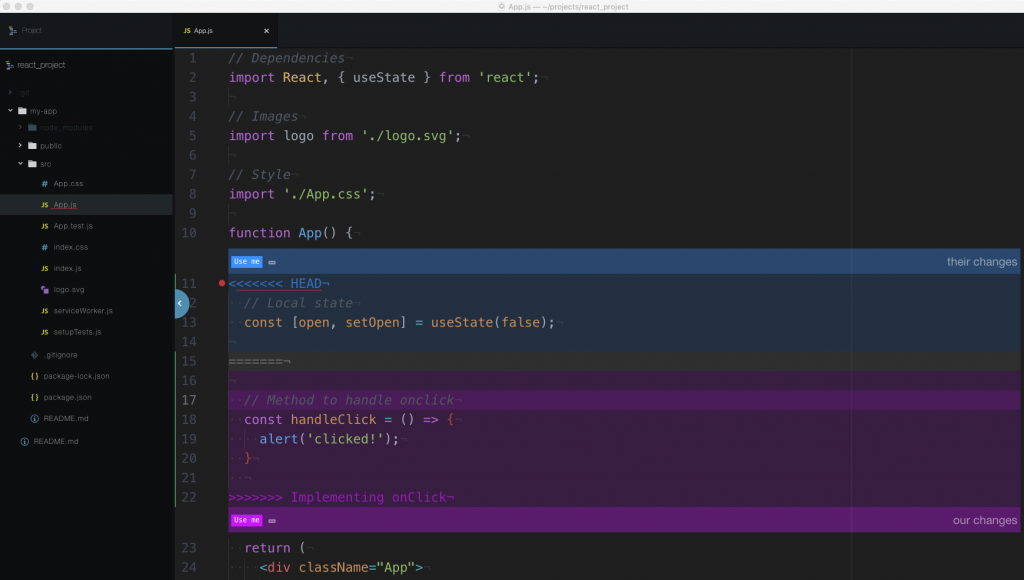
Now click on feature-branch in the bottom right corner and choose ‘Manage branches’. To solve the conflict go back to Visual Studio and make sure you are still on the feature-branch. This gives me a conflict straight away on the Raygun.cs file. I Azure DevOps I’ve now created a pull request from feature-branch -> master.
RESOLVE MERGE CONFLICTS GITHUB WEB EDITOR CODE
This action will result in master and feature-branch having changes to the same code lines and thus create a conflict when merging. This could simulate another team comitting their changes to master before your own In master branch I’ve made a change to the same line, but set ammo to 6. In feature-branch I’ve changed a line in the Raygun.cs class by updating ammo to 8, and made a push on feature-branch. The guide should be more in flow with best practices. I have updated the guide to reflect comments made by others. I’ve used a simple bugkiller repo you can get here on GitHub.īefore I start, I’ve created a feature-branch from master.
RESOLVE MERGE CONFLICTS GITHUB WEB EDITOR HOW TO
There’s great guide over on on how to resolve Git merge conflicts, but I missed some steps so I created my own. Everything could also be done from the command line. This is a guide to fix merge conflicts using Visual Studio and Azure DevOps Git as source control. If you get a 404 on the base_commit get, this mean that your file doesn't exist on the target branch, so there isn't anything to do from the perspective of adding conflict tags.This is a short guide to help resolve merge conflicts in Azure DevOps – former VSO. If you get a 404 on the merge_base_commit get, this means you need to do a two-way merge. Once you have all 3 files you can do your three-way merge using the merge program. Replace the ref query string parameter with the sha from both your base_commit and merge_base_commit: results and results. The contents_url as-is will get you your version of the file. To get the 3 versions of your file, start with the 'contents_url' key out of each file key. A simple regex to replace the merge tags will make it look like the git conflict tags. The -D parameter will give you a marked up file, very similar to what you want. If there isn't a merge_base_commit version of the file, you would use: diff -DCONFLICT file(commits) file(base_commit). If so then you will do a 3 way merge, just like git using merge: merge -p file(commits) file(merge_base_commit) file(base_commit) which will give you the conflict tagged file that you seek. Both of these are at the top level.įor each file in the files key you need to figure out if there is a merge_base_commit version of the file. The merge_base_commit key is the common ancestor of your commit/branch and the target(i.e.

The base_commit key, found in the response json, is the commit into which you are merging your branch.

The 'files' key in the response from the API call will give you all of the conflicted, added, and deleted (I think) files. Do it in the direction that you want to merge. If you are trying to do this in a web browser, you may need to put the approach described below behind your own API. I would guess that in your design the conflicted files are saved locally to disk or presented in the web browser. You can get pretty close to re-creating this behavior by using a combination of the GitHub Commits API and 2 command line programs: merge and diff.


 0 kommentar(er)
0 kommentar(er)
